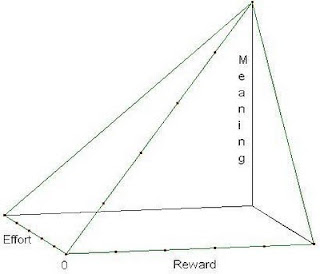Since as long as I can remember, I’ve been somewhat of a completist when it comes to video games. I will admit that as I’ve grown older, my definition of “complete” has changed due to the amount of time I have for any particular game, but I still feel like I should try to get as much out of any game I play. For this reason, I find that the concept of collectibles to strike a very close chord with me.
I have collected many things in my life, Sonic’s Rings and Mario’s Coins, items that let me survive longer, making game completion more achievable; Sonic’s Emeralds which changed endings; the many arbitrary icons and photo points in Grand Theft Auto: San Andreas that gave me access to tools in-game; Battle Trophies in Star Ocean: Till the End of Time that gave me costumes and difficulty levels; Legendary weapons in countless RPGs; Bestiary entries; and more modernly, PS3 Trophies and Xbox Achievements.
And what have I learned from years of collecting items with little-to-no real world value? Collecting things makes you feel good… as long as:
A) you feel you earned them.
B) you feel that what you got was worth the effort put into it.
So what does this mean from a design standpoint?
As designers, it’s our job to make whatever collectibles we put into a game as lucrative to get as possible. A collectible with no meaning is a waste of time to collect and will only be a source of frustration to our players. At the same time, if we make them lucrative to collect, the challenge to get them should reflect that. A large reward without any risk is just a gift, which may be nice, but really is equally meaningless.
 |
| Effort vs. Reward vs. Meaning |
On the other side of the graph, we look at achievements that are “earned” without having to do anything. Without naming any titles, there has been numerous mentions of games that give the entire set of Achievements by just completing each stage – and the stages aren’t particularly difficult either. Sure, people who care all about their score will pick up these titles to abuse the system, but really what do those points mean if they are getting them without actually achieving anything? Isn’t the act of achieving something the meaning of Achievements?
Finally, there is the top of the graph, the area at the top of the Meaning axis. This area is the hardest to give examples for because Meaning means different things to different people. In its purest sense it is the sense of accomplishment – getting the high score, getting the 100% completion, getting the uber weapon - whatever it may be, it is different for each game and for each player. Not every game has a collectible in this area, though the games that are considered the most satisfying by fans and critics alike always do. Having an abundance of high-meaning collectibles for a game can prolong its life – even the classics from the 8-bit and 16-bit eras have fans constantly coming back for those 100% completion runs because they feel good to achieve.
So in conclusion, collectibles are definitely an important part of the design process and one that should take a lot of thought by the design team. Collectibles need to have meaning for them to be worth getting and to give them meaning, the effort to get the collectible and the reward from getting the collectable have to be balanced. If games have meaningful collectibles, then they will enjoy longevity by people who have earned the sense of satisfaction.
Ryon Levitt is a programmer-turned-designer for TECMO KOEI CANADA, with about 3 years of credited design experience. Ryon is one of the founding members of the IGDA Game Design SIG, and helped coin the acronym GDAM.







0 comments:
Post a Comment